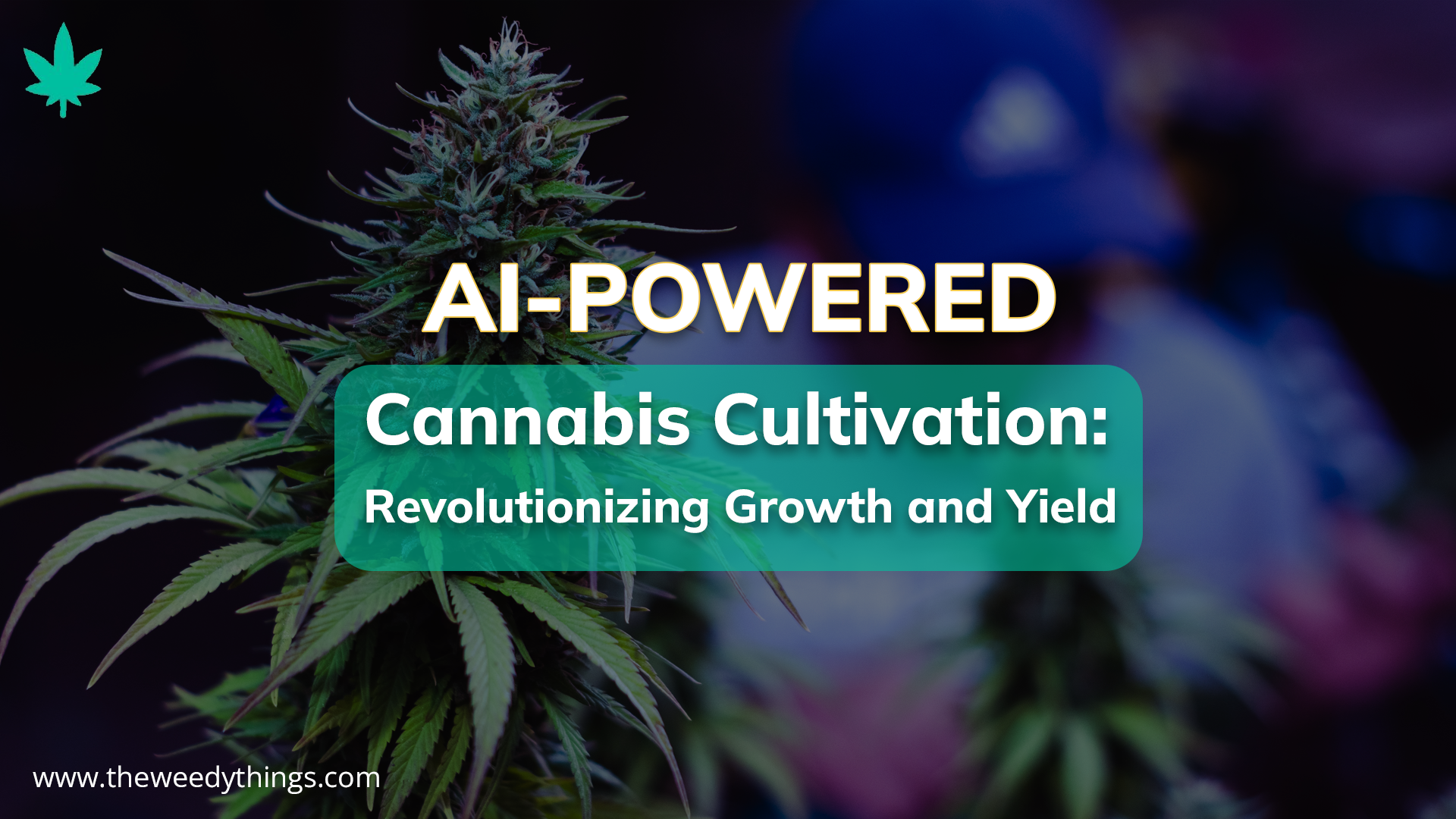Technology is having a significant impact on how the cannabis industry develops in the future. Artificial intelligence (AI), one of the most revolutionary developments, is transforming the cultivation, monitoring, and harvesting of cannabis. AI-powered cannabis production offers a more intelligent and sustainable method of farming, from increasing yields and decreasing waste to improving crop quality.
What Is AI-Powered Cannabis Cultivation?
Advanced algorithms, sensors, and machine learning models are used in AI-powered cannabis cultivation to track plant health, forecast results, and automate crucial agricultural procedures. In order to provide ideal growing conditions at all times, these intelligent systems evaluate data in real-time and make well-informed decisions regarding temperature, humidity, nutrient supply, lighting, and watering.
Key Benefits of AI in Cannabis Farming
1. Precision Agriculture
Growers are able to customise growth methods for every strain thanks to AI’s ability to precisely control environmental variables. This accuracy results in:
Enhanced cannabinoid and terpene profiles
Reduced resource usage
Lower risk of disease and pest outbreaks
Real-Time Monitoring and Alerts
Variables including soil moisture, pH levels, and plant growth rates are continuously monitored by sensors positioned throughout a grow operation. AI programs are able to:
Detect anomalies or stress signals early
Send alerts for necessary interventions
Maintain consistent plant health
Predictive Analytics
AI is able to predict by examining past data and environmental trends.
- Timelines for harvest
- Estimates of yield
- Possible dangers or malfunctions with the equipment
Growers can maximise productivity by taking preventive measures thanks to this insight.
Automated Irrigation and Nutrient Delivery
AI-enabled systems control the distribution of nutrients and water according to the requirements of individual plants. This automation
Reduces waste
- Enhances root health and plant development
Avoids excessive or insufficient feeding
Labor Efficiency and Cost Savings
By eliminating the need for continuous physical labour, automation of processes including nutrition delivery, climate control, and monitoring improves resource allocation and lowers operating expenses.
AI Tools and Technologies in Use
- Machine vision cameras can visually identify pests or illnesses and analyse plant development trends.
IoT sensors: Monitor the surroundings in real time and provide AI systems with data.
- Data analytics platforms: Give growers access to reports and dashboards so they may examine AI insights.
Drones and robotics: Automate manual labour-intensive chores including spraying, monitoring, and trimming.
The Future of Smart Cannabis Farming
Cannabis growing is expected to become even more sustainable and efficient in the future as technology develops. AI-driven agriculture may become the standard for commercial producers as a result of advancements in AI algorithms, less expensive sensor technology, and increased public acceptance of cannabis.
Frequently Asked Questions
AI helps with automation, yield prediction, precise control, and real-time monitoring, which improves plant health and increases crop yields.
Affordable AI tools and kits are making smart farming possible for small to mid-size growers as well, while it was initially more accessible to large farms.
AI optimises growing conditions by utilising information from environmental sensors, development stages, past yields, and more.
Through sensors or image analysis, AI can identify early disease indicators, enabling prompt action to stop its spread.
Local cannabis laws determine whether it is legal or not. Although AI technology is legal in and of itself, local rules must be followed when using it to grow cannabis.




